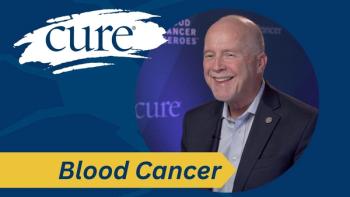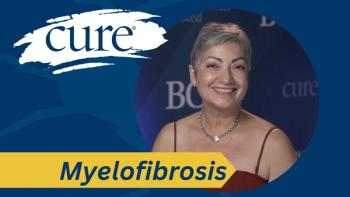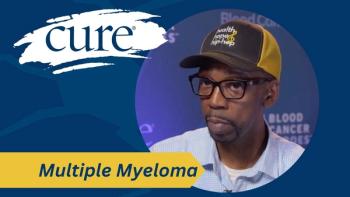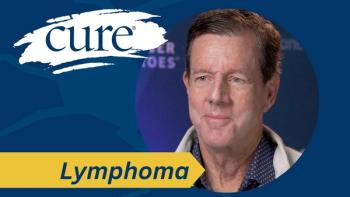
Idhifa Approved by the FDA to Treat Relapsed AML
Idhifa (enasidenib) was granted approval by the Food and Drug Administration (FDA) today, for the treatment of patients who have relapsed or refractory IDH2-mutated acute myeloid leukemia (AML).
Idhifa (enasidenib) was granted approval by the Food and Drug Administration (FDA) today, for the treatment of patients who have relapsed or refractory IDH2-mutated acute myeloid leukemia (AML). The approval is based on the findings from a recent phase 1/2 study, and a companion diagnostic, the RealTime IDH2 Assay, was also approved for the detection of the IDH2 mutation.
In the 199-patient phase 1/2 study, known AG221-C-001, Idhifa demonstrated a complete remission (CR) rate of 19.3 percent in patients with relapsed or refractory IDH2-mutant AML. The median duration of CR was 8.2 months. Additionally, 4 percent of patients had a CR with partial hematologic recovery (CRh), which lasted for 9.6 months, according to the FDA. Thirty-four percent of 157 transplant-dependent patients could stop receiving blood or platelet transfusions following treatment with Idhifa.
“Idhifa is a targeted therapy that fills an unmet need for patients with relapsed or refractory AML who have an IDH2 mutation,” said Richard Pazdur, M.D., director of the FDA’s Oncology Center of Excellence and acting director of the Office of Hematology and Oncology Products in the FDA’s Center for Drug Evaluation and Research. “The use of Idhifa was associated with a complete remission in some patients and a reduction in the need for both red cell and platelet transfusions.”
The approval was based on data from 199 patients with relapsed/refractory AML treated with oral Idhifa at a starting dose of 100 mg daily. The median age of patients was 68 years (range, 19-100), and the median number of prior therapies was two (range, 1-6). Fifty-two percent of patients were refractory to their prior therapy.
The phase 1/2 trial also enrolled other groups of patients, including those with untreated AML. Doses were originally escalated, with a starting dose of 30 or 50 mg daily or twice daily. The maximum tolerated dose was not reached at doses up to 650 mg/daily; however, the phase 2 dose (and the FDA recommended dose) was established as 100 mg once daily. Overall, 239 patients were treated in the trial.
In findings presented at the 2017 ASCO Annual Meeting for those with relapsed/refractory AML across all doses (176 patients), the median age was 67 years. The median number of prior therapies was two (range, 1-14) and 18 percent of patients had an ECOG performance status of 2. Thirty-four percent of patients had poor risk status by cytogenetics.
In the relapsed/refractory group, the objective response rate (ORR) was 40.3 percent. The median time to first response was 1.9 months and the median duration of response was 5.8 months. The time to a CR was 3.8 months, with an overall duration of CR of 8.8 months.
The median overall survival (OS) with Idhifa was 9.3 months. In those achieving a CR, the median OS was 19.7 months and in the non-CR responders the median OS was 13.8 months. In those without a response, the median OS was seven months.
Transfusion independence for red blood cells (RBC) and platelets was achieved by 95.5 percent and 94.1 percent of those with a CR, respectively. The overall RBC and platelet transfusion independence rates were 36.3 percent and 36.4 percent, respectively.
In patients treated across all doses explored in the phase 1/2 study (239 patients), the most common all-grade adverse events (AEs) were nausea (46 percent), hyperbilirubinemia (45 percent), diarrhea (40 percent), fatigue (40 percent), decreased appetite (38 percent), vomiting (32 percent) and dyspnea (31 percent). The most common treatment-related grade 3/4 AEs were hyperbilirubinemia (12 percent), thrombocytopenia (6 percent) and anemia (5 percent).
Safety data in the label for Idhifa were from 214 patients with relapsed/refractory IDH2-mutant AML. In this group, the median duration of treatment was 4.3 months. The most common grade 3 or higher AEs were total bilirubin increased (15 percent), potassium decreased (15 percent), phosphorus decreased (8 percent), calcium decreased (8 percent), diarrhea (8 percent), differentiation syndrome (7 percent), non-infectious leukocytosis (6 percent), tumor lysis syndrome (6 percent) and nausea (5 percent). Additionally, 14 percent of patients treated with Idhifa experienced differentiation syndrome.
“AML is a complex, heterogeneous disease, which is particularly difficult to treat in the relapsed or refractory setting,” Martin Tallman, M.D., chief, Leukemia Service at Memorial Sloan Kettering Cancer Center, said in a statement. “IDH2 mutations inhibit the normal maturation of myeloid cells, so having a treatment that targets this mechanism is promising for patients and encouraging to us as physicians who have it as our goal to provide options for every patient.”
A phase 3 study, known as IDHintify, is comparing Idhifa with standard regimens in older patients with relapsed/refractoryIDH2-mutant AML. The trial, which is still enrolling, plans to include 280 participants with an estimated primarily completion date in April 2019. In this study, conventional therapy will consist of azacitidine and low- or intermediate-dose cytarabine. All patients will receive best supportive care (




